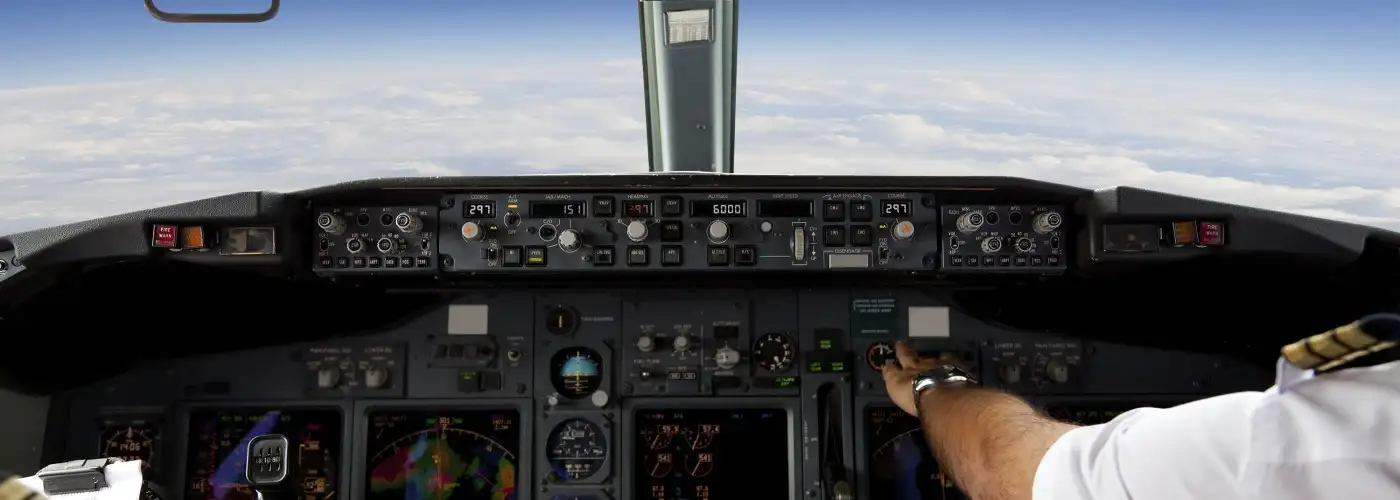From terrifying tales about airplane bathrooms to mid-flight door-opening fears, there are a lot of myths about air travel flying around out there. Here are 10 urban legends that just aren’t true.
Urban Legends About Flying That Aren’t True
Image Gallery
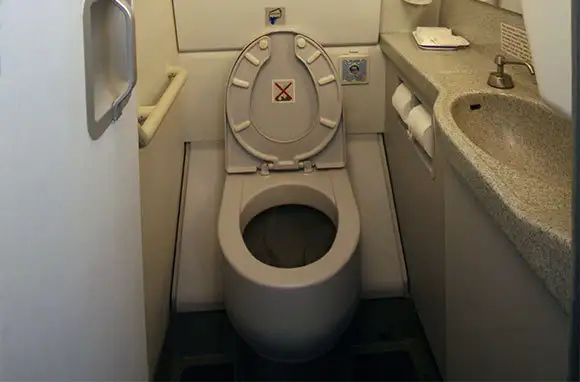
Airlines Dump Waste In-Flight
Apparently, so many people believe that airlines jettison sewage in-flight that the Federal Aviation Administration (FAA) had to release a fact sheet titled "It Came from the Sky: Human Waste, Blue Ice, and Aviation" to dispute the myths. The sheet dispels the legend of "blue ice" (or frozen airplane toilet water, which sometimes has a blue chemical added to it), explaining that aircraft waste is stored in a holding tank until landing, that it is not possible for airplane crew to dump waste in-flight (due to the mechanics of the system), and that the most likely explanation for being hit by something blue and disgusting from the sky is that "bird migration also occurs during a time when fruit trees are ripening. As the fruit goes through a bird's digestive system it loses none of its color, which means if it was blue going in, it will be blue coming out."

Airlines Dump Waste In-Flight
Apparently, so many people believe that airlines jettison sewage in-flight that the Federal Aviation Administration (FAA) had to release a fact sheet titled "It Came from the Sky: Human Waste, Blue Ice, and Aviation" to dispute the myths. The sheet dispels the legend of "blue ice" (or frozen airplane toilet water, which sometimes has a blue chemical added to it), explaining that aircraft waste is stored in a holding tank until landing, that it is not possible for airplane crew to dump waste in-flight (due to the mechanics of the system), and that the most likely explanation for being hit by something blue and disgusting from the sky is that "bird migration also occurs during a time when fruit trees are ripening. As the fruit goes through a bird's digestive system it loses none of its color, which means if it was blue going in, it will be blue coming out."

Personal Electronics Make Planes Crash
If you don't turn off your cell phone before takeoff, are you dooming yourself to a fiery crash? Probably not, or we highly doubt that electronics would be allowed on planes at all. Truth is, there's no real evidence that electronics pose a safety hazard during flight—pilots are even allowed to bring iPads into the cockpit. In fact, in 2013, the FAA revealed that it's rethinking the ban on device use. So, soon you may not have to stop reading your Kindle during takeoff and landing after all.
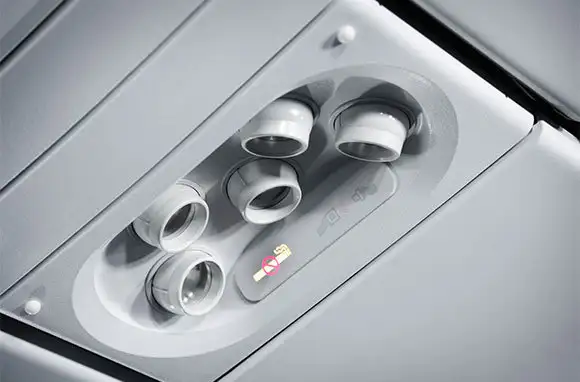
Recirculated Air Makes You Sick
Do you get sick every time you fly? It's not the recirculated air that's making you ill. The air inside the cabin is pressurized fresh air that has been filtered to remove more than 99 percent of bacteria and viruses. The more likely culprit for that virus you caught on vacation is something you touched onboard the plane—tray tables, blankets, and bathrooms are germ hotbeds.
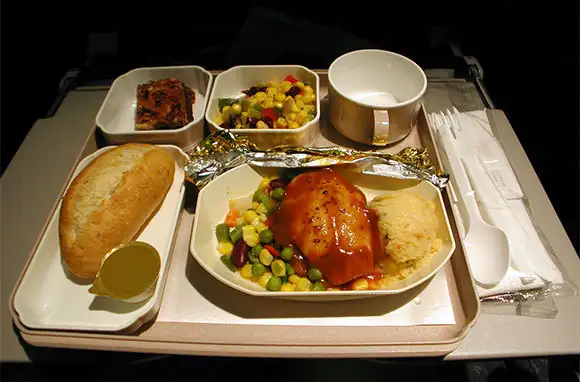
Airplane Food Tastes Bad
No one fondly reminisces about all the great airplane meals they've eaten on their travels. But is the food itself really to blame? According to a study conducted by University of Manchester researchers, it could be the loud noise from the plane's engines that makes flyers think their in-flight meals taste bad. The study found that background noise (which is constant on airplanes) can distract eaters and change their perceptions of how the food tastes.
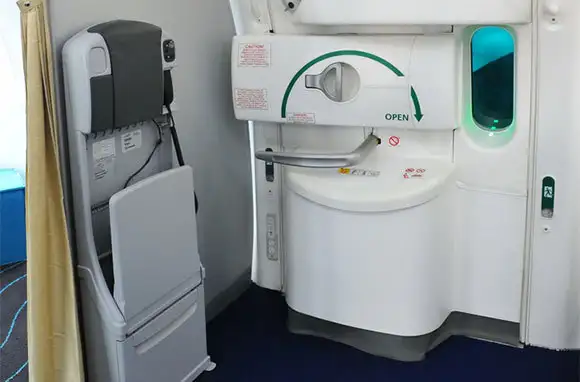
You Can Open the Aircraft Doors In-Flight
News stories abound of disgruntled passengers attempting to pry open airplane doors during flight. No need to worry—it is physically impossible for a person to pry open an airplane door when the cabin is pressurized, because the difference in air pressure is too great.
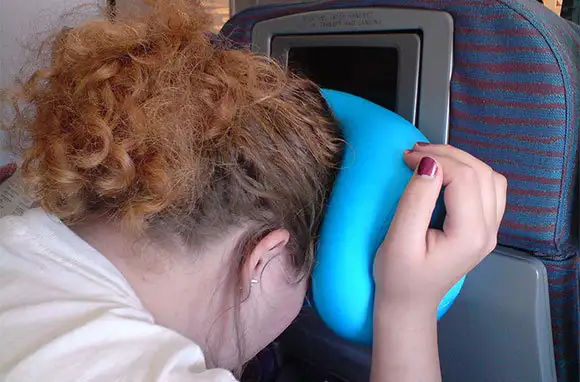
Brace-Position Conspiracies
Google "brace position" and you'll be treated to pages of results from people who believe that, in the event of a crash, it is not safer to sit in the brace position than sit normally—and, in fact, that it's encouraged only to preserve passengers' teeth (thereby making body identification easier). Another theory is that the position is designed to break flyers' necks and kill them quickly, because it is cheaper for an airline to pay for a wrongful death settlement than injury compensation. That's just simply not true. Studies of airline crashes have shown that the brace position, when done correctly, saves lives. By placing your head on the seat in front of you, you will significantly reduce the risk of head trauma in a crash.
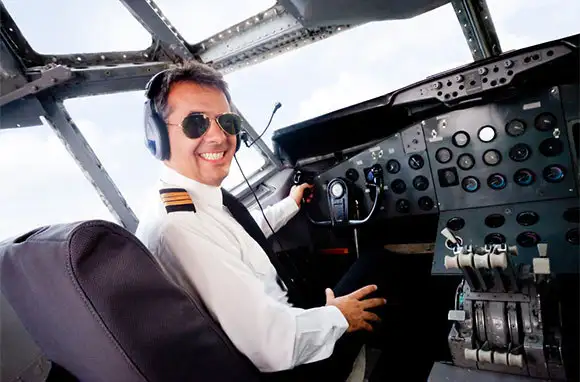
Autopilot (Not Pilots) Fly Planes These Days
Technology is so advanced that the pilot can just press a button and cruise on autopilot for the entire flight, right? Not quite. Autopilot is rarely used during takeoff and landing. It's primarily used when the plane is cruising. Even then, the pilot keeps a close eye on it and makes adjustments as needed.
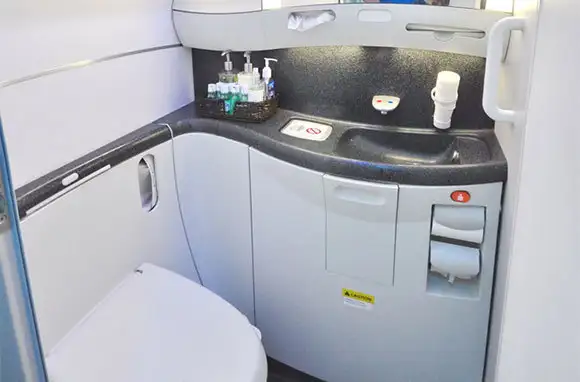
You Can Get Stuck to the Airplane Toilet
It's a myth that sounds so plausible even the BBC believed it: In 2002, the news agency ran a report about a woman who got stuck to an airplane toilet after she flushed while remaining seated. The story claimed that the flush had created a vacuum seal that trapped the passenger to the toilet and that the woman had to be freed by airport technicians after landing.
The BBC had to run a retraction after the story was proven to be just an urban legend. In fact, it's not possible for anyone to get stuck to an airplane toilet seat—the person sitting would have to create an airtight seal around the toilet (not likely), and even if that did happen, as soon as the toilet stopped flushing, the seal would be broken.
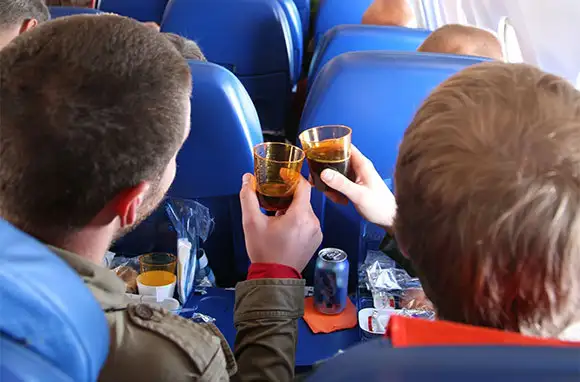
You Get Drunk More Quickly on a Plane
We'd like to think that pricey in-flight drinks give you more bang for your buck by getting you more intoxicated, but it's not true. Studies have shown that drinkers' blood-alcohol levels aren't higher in the air than on the ground. However, both alcohol and air travel can dehydrate you, so your hangover may be worse after a few drinks in the sky than a few at the bar.
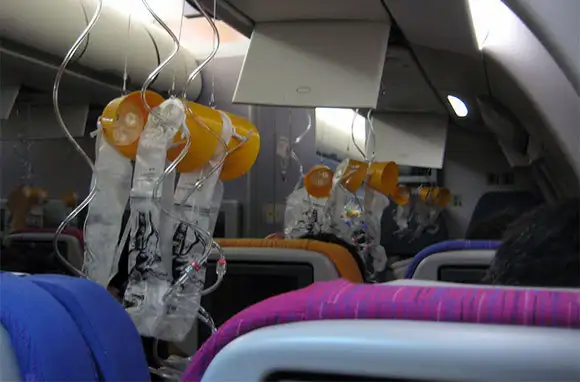
The Oxygen In Masks Gets You High
If you prefer to get your scientific facts from Hollywood, you may believe that the oxygen in airplane masks is there to get flyers high. As Tyler Durden said in Fight Club, "You know why they put oxygen masks on planes? Oxygen gets you high. In a catastrophic emergency, you're taking giant panicked breaths. Suddenly you become euphoric, docile. You accept your fate." Of course, the truth is that oxygen masks are there so that you can breathe in the event that the cabin pressure is lost. Oxygen won't get you high—no matter what "oxygen bars" or movies try to tell you.
More from SmarterTravel:
- 8 Foods You Should Never Eat Before Flying
- 7 Ways to Get Kicked Off a Plane
- 9 Things Not to Wear on a Plane
Editor’s note: This story was originally published in 2013. It has been updated to reflect the most current information.
We hand-pick everything we recommend and select items through testing and reviews. Some products are sent to us free of charge with no incentive to offer a favorable review. We offer our unbiased opinions and do not accept compensation to review products. All items are in stock and prices are accurate at the time of publication. If you buy something through our links, we may earn a commission.
Related
Top Fares From
Today's Top Travel Deals
Brought to you by ShermansTravel
France: 8-Night Paris, Avignon & Nice...
Infinity Worldwide Vacations
 vacation
$2880+
vacation
$2880+
Poconos: 3 Nts in Garden of...
ResortsAndLodges.com
 hotel
$305+
hotel
$305+
7-Nt Canada & New England Cruise,...
Princess Cruises
 cruise
$839+
cruise
$839+
